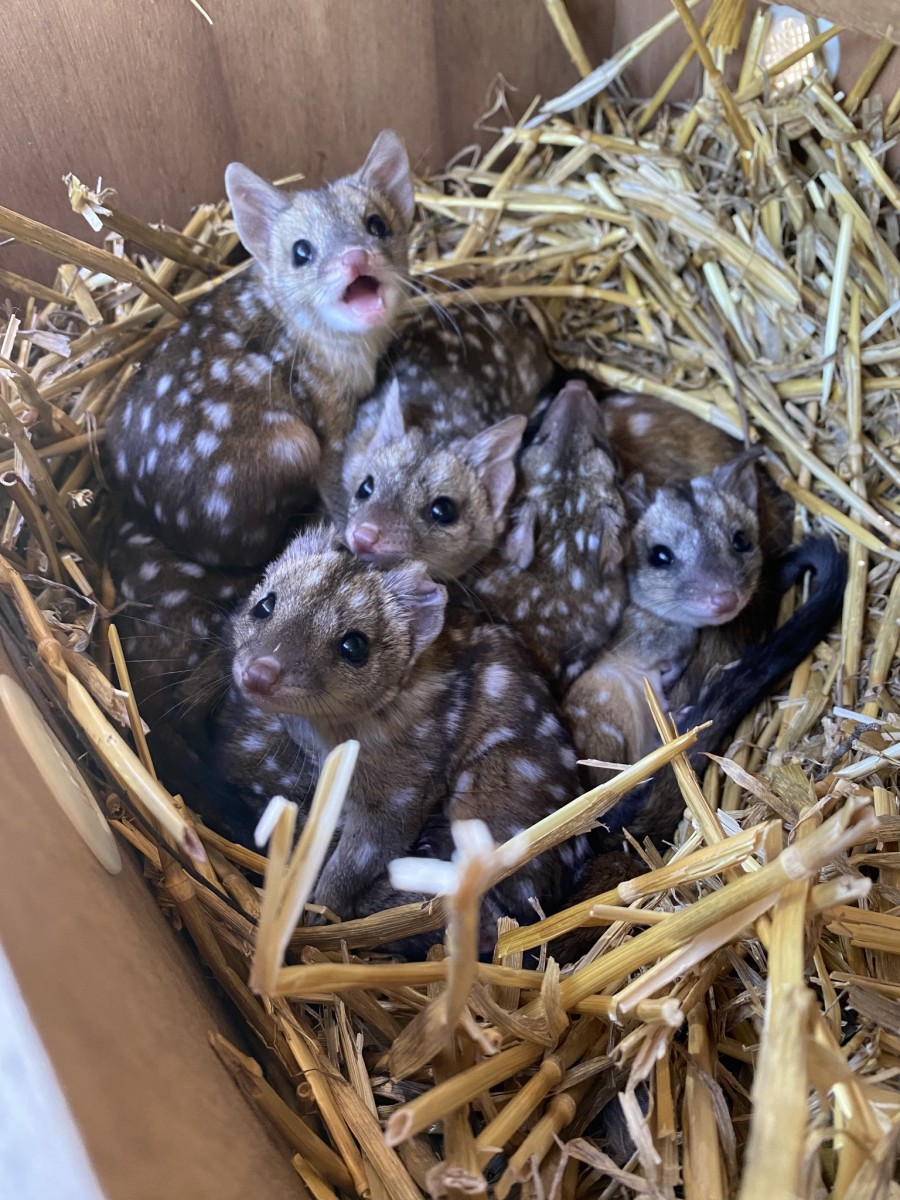In a major breakthrough for conservation efforts, ecologists at Mt. Gibson Wildlife Sanctuary in Western Australia have made a heartwarming discovery—the first baby western quolls born at the sanctuary. These tiny marsupials, tucked safely inside their mothers’ pouches, mark a significant step forward in the ongoing mission to restore one of Australia’s most threatened species.
The discovery was made during a routine survey conducted by wildlife experts, who were thrilled to find evidence of successful breeding in the sanctuary. For conservationists, these newborns represent far more than just a scientific milestone—they symbolize hope, resilience, and the possibility of reversing decades of population decline.
Why Western Quolls Matter
Western quolls, also known as chuditch, are small, cat-sized carnivorous marsupials that play a critical role in maintaining ecological balance. As natural pest controllers, they help regulate populations of insects, rodents, and other small animals. Once common across nearly all of mainland Australia, the species has been pushed to the brink due to habitat destruction, land clearing, and threats from introduced predators such as foxes and feral cats.
Today, their natural range has shrunk drastically, with wild populations surviving only in isolated parts of southwestern Western Australia. This makes the births at Mt. Gibson especially significant, as they demonstrate the potential for reintroduction and long-term survival outside their dwindling native habitats.
A Triumph for Conservation Efforts
The births are part of a carefully managed reintroduction program led by the Australian Wildlife Conservancy (AWC). For years, AWC scientists and volunteers have worked tirelessly to create a safe haven for the quolls, protecting them from predators and restoring their natural environment.
Senior field ecologist Georgina Anderson expressed optimism about the program’s success, noting that the quolls are not just surviving, but thriving in their new environment. “These births show that the animals are adapting well to Mt. Gibson and that our conservation efforts are making a real difference,” Anderson said.
In addition to Mt. Gibson, AWC and partner organizations have been relocating quolls to other protected areas across the country, aiming to establish sustainable, genetically diverse populations. Every new birth strengthens the possibility of recovery and brings the species one step closer to reclaiming more of its former range.
Community Involvement and the Road Ahead
Conservation is never the work of scientists alone—it also requires the dedication of communities, volunteers, and ongoing public support. From habitat restoration projects to educational outreach, local involvement is helping secure a brighter future for the western quoll.
The sight of baby quolls nestled together in a straw-filled nesting box has quickly become a symbol of what is possible when humans work alongside nature instead of against it. Their survival story reminds us that even in the face of enormous ecological challenges, species recovery is achievable with persistence, passion, and proper protection.
A Symbol of Hope
The arrival of these newborn western quolls is more than a scientific achievement—it is a beacon of hope for conservation worldwide. It proves that human-led intervention, when done responsibly, can reverse the tide of extinction and allow endangered animals to flourish once again.
With continued monitoring, habitat expansion, and public awareness, experts are optimistic that western quolls will not only survive but thrive, slowly restoring balance to Australia’s fragile ecosystems.
Photo Credit: Australian Wildlife Conservancy / Facebook

